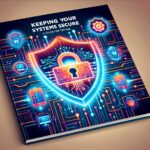Hey there tech-savvy folks! Today, we’re going to dive into the world of computer security and explore some tips and best practices for keeping your data safe. With cyber threats on the rise, it’s more important than ever to take proactive measures to protect your information and ensure that your systems are secure. So, without further ado, let’s get started!
Introduction to Computer Security
Computer security encompasses a range of practices and technologies designed to protect data, applications, and systems from unauthorized access, use, or destruction. In today’s digital age, where hackers and malicious actors are constantly on the lookout for vulnerabilities to exploit, it’s crucial to have robust security measures in place to safeguard your information.
Best Practices for Enhancing Computer Security
Use Strong Passwords
One of the simplest yet most effective ways to enhance computer security is to use strong, unique passwords for all your accounts. Avoid using easily guessable passwords like “password123” or “123456” and instead opt for complex combinations of letters, numbers, and special characters.
Enable Two-Factor Authentication
Two-factor authentication adds an extra layer of security to your accounts by requiring a second form of verification, such as a text message code or biometric scan, in addition to your password. This can help prevent unauthorized access even if your password is compromised.
Keep Your Software Updated
Software updates often include security patches that address known vulnerabilities and bugs. By keeping your operating system, applications, and antivirus software up to date, you can minimize the risk of exploitation by cyber attackers.
Be Wary of Phishing Attacks
Phishing attacks are a common tactic used by cybercriminals to trick individuals into revealing sensitive information, such as login credentials or financial details. Be cautious of unsolicited emails, messages, or phone calls asking for personal information and avoid clicking on suspicious links.
Use a Firewall
A firewall acts as a barrier between your computer and the internet, monitoring incoming and outgoing network traffic to block potentially harmful connections. By enabling a firewall on your device, you can help prevent unauthorized access and protect your data from malicious threats.
Back Up Your Data Regularly
In the event of a cyber attack or system failure, having regular backups of your data can be a lifesaver. Make sure to store your backups in a secure location, such as an external hard drive or cloud storage service, to ensure that you can quickly restore your information if needed.
Conclusion
In conclusion, computer security is an essential aspect of modern-day technology that should not be overlooked. By following best practices such as using strong passwords, enabling two-factor authentication, keeping your software updated, and being vigilant against phishing attacks, you can significantly reduce the risk of falling victim to cyber threats. Remember, a little bit of prevention goes a long way when it comes to safeguarding your data and protecting your digital assets. Stay safe out there, and happy computing!










